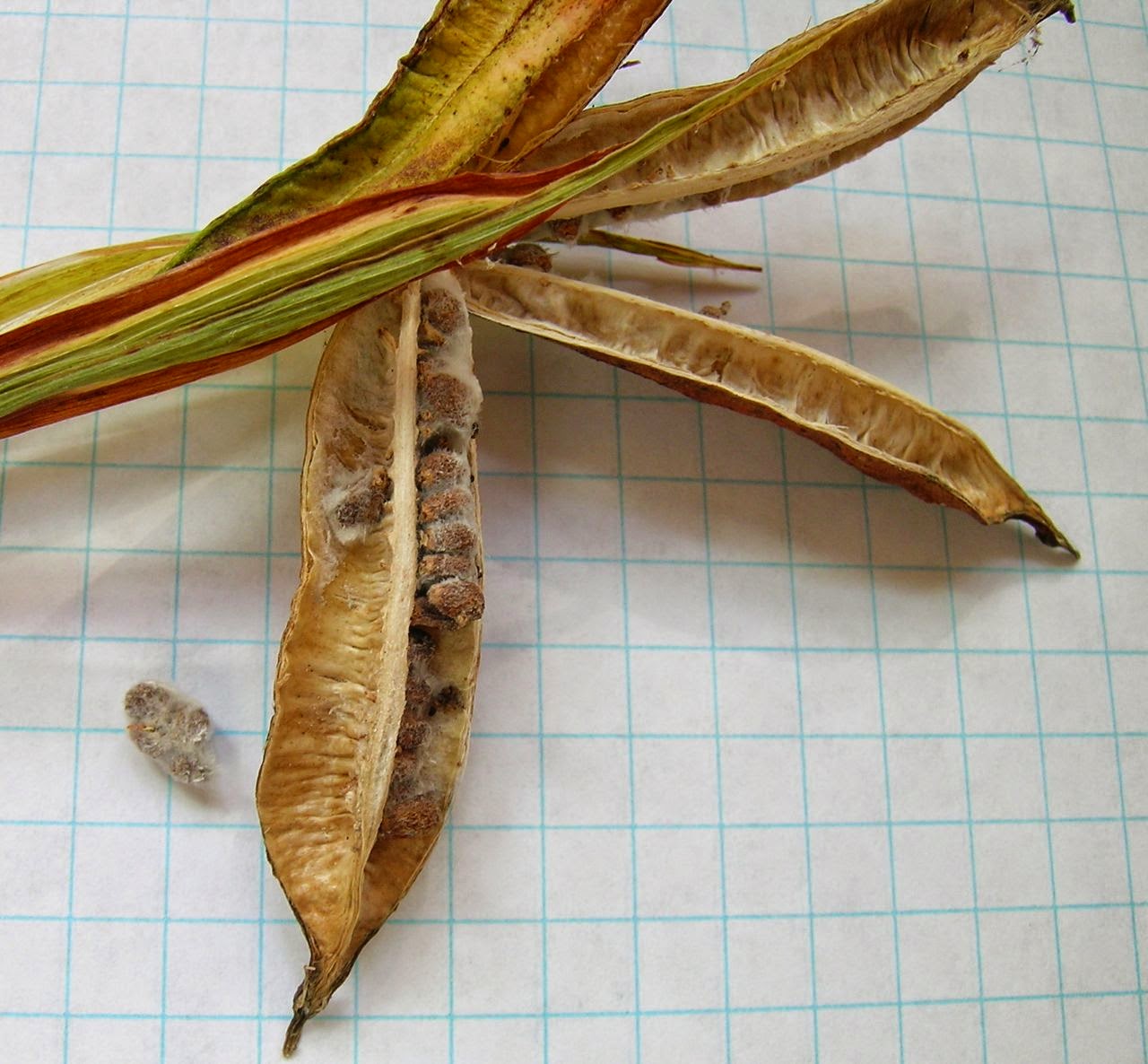October 2018, Kathleen Sayce
When I first started growing Pacifica Iris from seed, I collected several pods too early. The seeds were not fully developed, and resulting germination rates were low. There were also the usual vole, jay and squirrel problems—these animals being all too willing to eat germinating seeds.
 |
| Ripe PCI pod, tips just starting to spread. It's time to gather fresh iris seeds. Photo by Bob Sussman |
Come forward a few years; this year I was late gathering seeds, due to trips, work, and other commitments. What seeds I did collect were heavily colonized by fungi, despite a dry long summer along the Pacific Northwest coast. About half the seeds were composted due to fungal coatings. In many pods the seeds were completely felted together with fungal filaments.
All of this left me with a complex about the right time to gather ripe Iris seeds. I asked for advice among a number of SPCNI members, thinking I must not be the only person who has struggled with ripening, predation, and fungi, and several people responded with comments and photos, including Debby Cole and Bob Sussman. I thank both of them for their helpful notes, and Bob for taking time to send photos.
 |
| Label wrapping a pod that is close to being ready. Photo by Bob Sussman. |
Timing of seed ripening is based on tracking pod appearance. Pods go from skinny green to plump yellow and then brown. Six to seven weeks is the usual incubation period after flowering. Species often ripen quickly, including Iris tenax, I. innominata and I. thompsonii, which all may have yellowing and opening pods in five to six weeks in warm climates.
A slight opening of the pod tips may appear when seeds are ripe. This varies from ‘never opens the slightest’ to ‘splits wide open and tosses seeds out’. The latter usually happens when I’ve been inundated with visitors, trips or work and do not have time to gather pods. Organza bags can help contain the seeds, but don’t leave them for weeks, or the bags will be chewed through and the seeds removed.
 |
| Open pods, some seeds have already shed. Note the withered flower, still attached, lower left. Photo by Bob Sussman. |
The corollary to ‘never opens in the slightest’ is that those pods may need to be cut open to free the seeds inside. Some Iris douglasiana pods have this character. They go from green to yellow, often with a ‘shrink-wrapped over the seeds’ look, and then to plump brown, by which time the pods are woody, hard, and require tools to open without shedding blood. The worst of this lot are also the last to flower and thus to ripen seeds each summer.
When ripe seeds are left too long, they will be discovered by voles, crows, jays, and various molluscan and insect seed-eaters. The only solution is to get to those pods ahead of the seed-eaters.
Fungi appear to grow in the pod tissue and seed coats, and not in the seeds. I’ve had healthy seedlings grow from seeds heavily covered in fungi. But we can't seen around seeds that have visible mold. Biosecurity is getting tighter all the time. If we gather seeds at the right time, and reduce/eliminate fungi thereby, this helps reduce the chances that seeds will be rejected by inspectors.
 |
| Viable fresh seeds, just released from the pod, which is still green. These seeds will dry to dark brown. Photo by Bob Sussman. Note the absence of fungi on these seeds. |
As for color, that is a feature of the moisture content of the seed. Fresh, viable seeds are very light brown, and dry seeds are dark brown.




